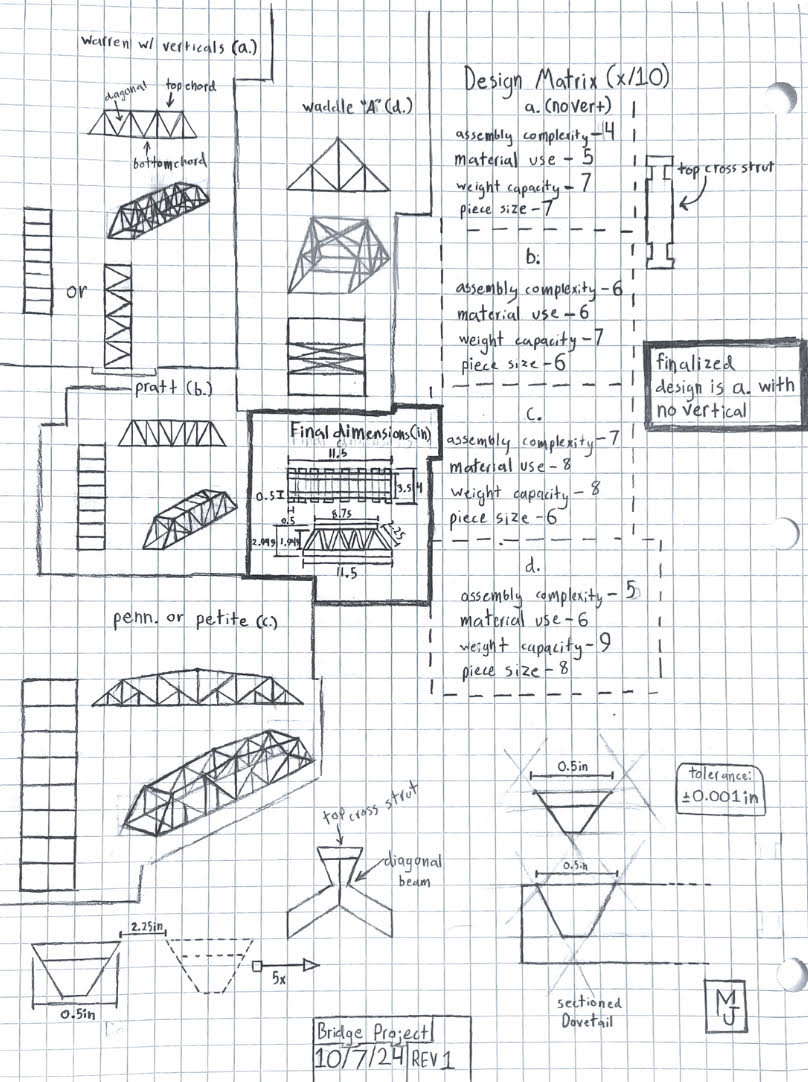The Bridge Project
The Bridge Project was designed as a way to test knowledge of manufacturing methods along with knowledge of statics and moments. The goal of the project was to make a bridge out of an assigned material, that could span a 12” gap, hold 30 lb, and fit a 2”x 3”x 2” object down the center, while keeping to a strict set of material requirements.
This project allowed for the exploration of bridge design principles, including balancing forces, redundancy, load splitting, and material durability, all while adapting to the unique properties of resin casting. Sources can be found at imageshosted.github.io/citations.pdf, a Github account I run.





